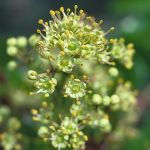| Common Name: |
Angostura |
| Other Names: |
Cusparia Bark |
| Botanical Name: |
Galipea officinalis syn. G. cusparia |
| Genus: |
Galipea |
| Family: |
Rutaceae |
| Native Location: |
Tropical S America |
| Cultivation: |
Rich soil in partial shade. This species does not appear to be cultivated; no information has been found about its needs. |
| Harvest: |
Bark is dried for use in concentrated infusions, liquid extracts, and powders. |
| Height: |
15m (50ft) |
| Width: |
10m (30ft) |
| Hardiness: |
Min. 15-18°C (59-64°F) |
| Parts Used: |
Bark |
| Properties: |
A bitter, musty smelling, tonic herb that stimulates the liver and gall bladder, lowers fevers, and relaxes spasms. |
| Medicinal Uses: |
Internally for dysentery, bilious diarrhea, poor appetite, and feverish illnesses. Large doses are laxative and emetic. |
| Economic Uses: |
Extracts are used in the food industry to flavor alcoholic and soft drinks, candy, and baked products; also as an ingredient of bitters, such as Angostura. |
| Bibliography: |
Encylopedia of Herbs by Deni Brown Copyright ©: 1995, 2001 Dorling Kindersley Limited pp 218-219
|

